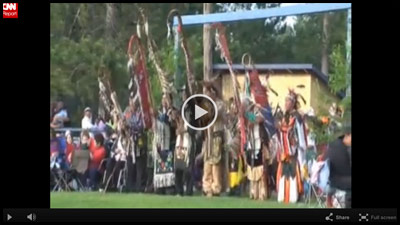- LLBO Home
- Administration
Administration
Child Support Enf.DMVDuluth OfficeEconomic DevelopmentEnrollmentFinancial ServicesFleet ManagementLegal DepartmentMIS
Opioid TreatmentPurchasingSecurityT.E.R.O.TransitTribal DevelopmentTwin Cities OfficeUtilities Commission
Tribal Court
Court HomeCourt FormsCourt FinesCourt Codes
Attorney ProceduresBaMeNim AnishinaabegDiversionTribal Court Awards
Tribal Police
LLTPD HomeAnimal ControlDomestic ViolenceMeth Coordinator Prescription Drug
- Education
- Health Division
Health Programs
AmbulanceBehavioral H.Car Seat ProgramChriopractic, Accupunct.D. Fitness CenterENPEmergency Prep.Environmental HealthFamily Spirit
Food DistributionHome Health CHRMed TransportationNutrition ServicesOccupational HealthPatient BenefitsS.H.I.P.
Elder & Disability Services
Nursing programs
Community ClinicsWadiswan "Nest"WIC
Child & Teen ClinicLL Diabetes ClinicTransform Rez
Health Reports
- Human Services
Addictions & Dependecies Program
A & D ProgramAdolescent OutpatientAhnjiBeMahDis HouseAssessment UnitFamily Violence Prevent
Outpatient TreatmentRecovery MaintenanceRelapse PreventionWomen's Halfway HouseWomen's Services
Child Welfare
Adoption ServicesChild Abuse PreventionChild ProtectionFamily Preservation
Foster CareParent Support ServicesTruancy PreventionYouth Living Skills
Other Human Serviecs Programs
- Res. Services
Reservation Services
EngineeringFacilities ManagementHeavy EquipmentRoads & SurveySanitation
Small Vehicle RepairSolid WasteWell & SepticWell Drilling
Community Services
- Resource Mgmt.
- Tribal Assistance
Tribal Assistance Programs
Pow Wow
Passing on the dance of the Ojibwe
By nealmoore | Posted July 19, 2009 | Ball Club, Minnesota
Original Report: http://ireport.cnn.com/docs/DOC-300489
BALL CLUB, Minnesota (CNN iReport) --- When the children dance at the Mii-Gwitch Mahnomen Days pow wow money is thrown at their feet in a symbolic gesture of respect. The money is then collected and given to the elders, who watch on with great smiles from the elders’ booth.
Veterans, the youth, women, and elders are all honored at this traditional pow wow, now celebrating its 47th year, in multiple ways. Many of which are sacred and cannot be recorded by camera or sound. For example there are the songs of the drums. Each drum possesses within it a song which is special – a song within that only that drum can play.
Then there are the power rings which form a circle around the pow wow ring, used to hoist individual flags for family members who have passed on in active combat overseas. These flags must be raised by a veteran, and preferably a veteran who is a member of the family. I spoke with Don Schaaf, a veteran that saw combat in Beirut. Don was there to raise a flag for his father, Al Schaaf, who had fallen as a paratrooper in Korea. “It’s basically how [we] grieve and how [we] deal,” he explained.
What makes this particular pow wow special is that it features approximately 300 dancers and concentrates on the old and the young. My take for a story was to attempt to document how the knowledge of the dance is passed down from the old to the young, from generation to generation.
When I went to the source – a senior elder of this Leech Lake Band of Ojibwe – he instructed me in the best possible method. Instead of answering my series of prepared questions, he encouraged me to watch and to listen and to feel – to learn about the pow wow by witnessing it firsthand, for myself. Good advice from a professional educator. John Mitchell, the elder, is 87 years old and just won the National Education Indian Elder Award. He told me that dancing cannot be taught – that it must be watched and appreciated. That there’s a love about it that must come from within – a love that can be passed from generation to generation.
And funny enough, when I spoke with Andrew Wakonabo, a winning boy crowned “Mii-Gwitch Mahnomen Brave” from last year, he said the same thing, explaining, “I pretty much learned myself – watching other people dance.” The winning dancers are crowned “brave” and “princess” and their title is more complicated than simply wearing a crown and a banner. Leech Lake Band of Ojibwe Councilman Joe Gotchie explained that once they win, for the entire year they must “demonstrate responsibilities [so] that other youth look up to them.”
There are all sorts of dances at the pow wow and members must be dressed in full regalia to be permitted to participate in competition. Here we witnessed grass, traditional, jingle dress (healing dress) and fancy shell dancers. There are also dances for everyone in the audience, dances for the entire community and all visitors to participate in.
When I met with the councilman the night before the pow wow he told me of an aunt of his who back in his rebellious youth was a real hard case. She’d get all the boys riled up and excited about the pow wow. “You know the pow wow’s coming,” she’d exhort, “yelling and cussing and telling us we had to sort ourselves out and get ourselves in line.” Joe broke down while he told me the story – he said that it was for her that he would dance – that to this day he’s going to all of this work year in and year out (now running the show) just to make this aunt proud. Even though the aunt has been gone now for several years, he can still hear her.
There’s a bond between the old and the young within the Native American community that other cultures can learn from. The Ojibwe historically used complex pictures on sacred birch bark scrolls to communicate their knowledge.
Today, I learned that for the Ojibwe, dance communicates love. I saw a lot of smiles and felt a feeling that as one older member of the Leech Lake Band of Ojibwe explained “is impossible to put into words”. A language all its own which is positive and knows no age.
Photos by Neal Moore:
1) Elder John Mitchell, Leech Lake Band of Ojibwe, Ball Club, MN
2) Young dancer in butterfly regalia, Ball Club, MN
3) In the drum circle, Ball Club, MN
4) A young girl in dance, Ball Club, MN
5) Sandy Gotchie, WWII Vet, Leech Lake Band of Ojibwe, Ball Club, MN
6) Young boy in dance, Ball Club, MN
7) Young man in regalia, Ball Club, MN
8) Two princesses and their headdress embroiderer, Ball Club, MN
9) A young Native American boy tugs towards the dance, Ball Club, MN
Follow the journey…
Blog: flashriversafari.com
Foundation: creativevisions.org
iReport: ireport.com/people/nealmoore
Twitter: twitter.com/mooreneal
Link to video: http://ireport.cnn.com/docs/DOC-300489




